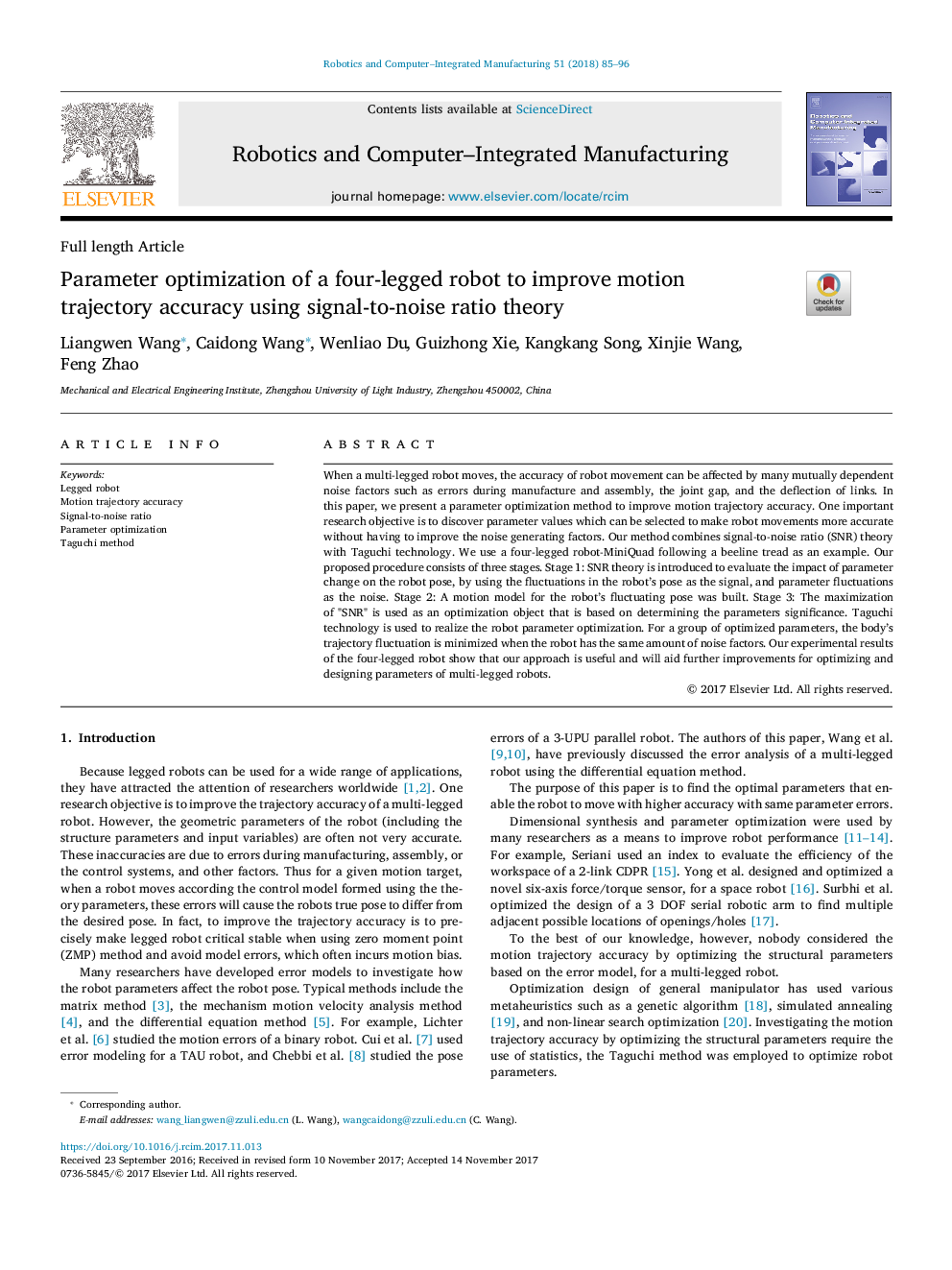| Article ID | Journal | Published Year | Pages | File Type |
|---|---|---|---|---|
| 6867823 | Robotics and Computer-Integrated Manufacturing | 2018 | 12 Pages |
Abstract
When a multi-legged robot moves, the accuracy of robot movement can be affected by many mutually dependent noise factors such as errors during manufacture and assembly, the joint gap, and the deflection of links. In this paper, we present a parameter optimization method to improve motion trajectory accuracy. One important research objective is to discover parameter values which can be selected to make robot movements more accurate without having to improve the noise generating factors. Our method combines signal-to-noise ratio (SNR) theory with Taguchi technology. We use a four-legged robot-MiniQuad following a beeline tread as an example. Our proposed procedure consists of three stages. Stage 1: SNR theory is introduced to evaluate the impact of parameter change on the robot pose, by using the fluctuations in the robot's pose as the signal, and parameter fluctuations as the noise. Stage 2: A motion model for the robot's fluctuating pose was built. Stage 3: The maximization of "SNR" is used as an optimization object that is based on determining the parameters significance. Taguchi technology is used to realize the robot parameter optimization. For a group of optimized parameters, the body's trajectory fluctuation is minimized when the robot has the same amount of noise factors. Our experimental results of the four-legged robot show that our approach is useful and will aid further improvements for optimizing and designing parameters of multi-legged robots.
Related Topics
Physical Sciences and Engineering
Computer Science
Artificial Intelligence
Authors
Wang Liangwen, Wang Caidong, Du Wenliao, Xie Guizhong, Song Kangkang, Wang Xinjie, Zhao Feng,
